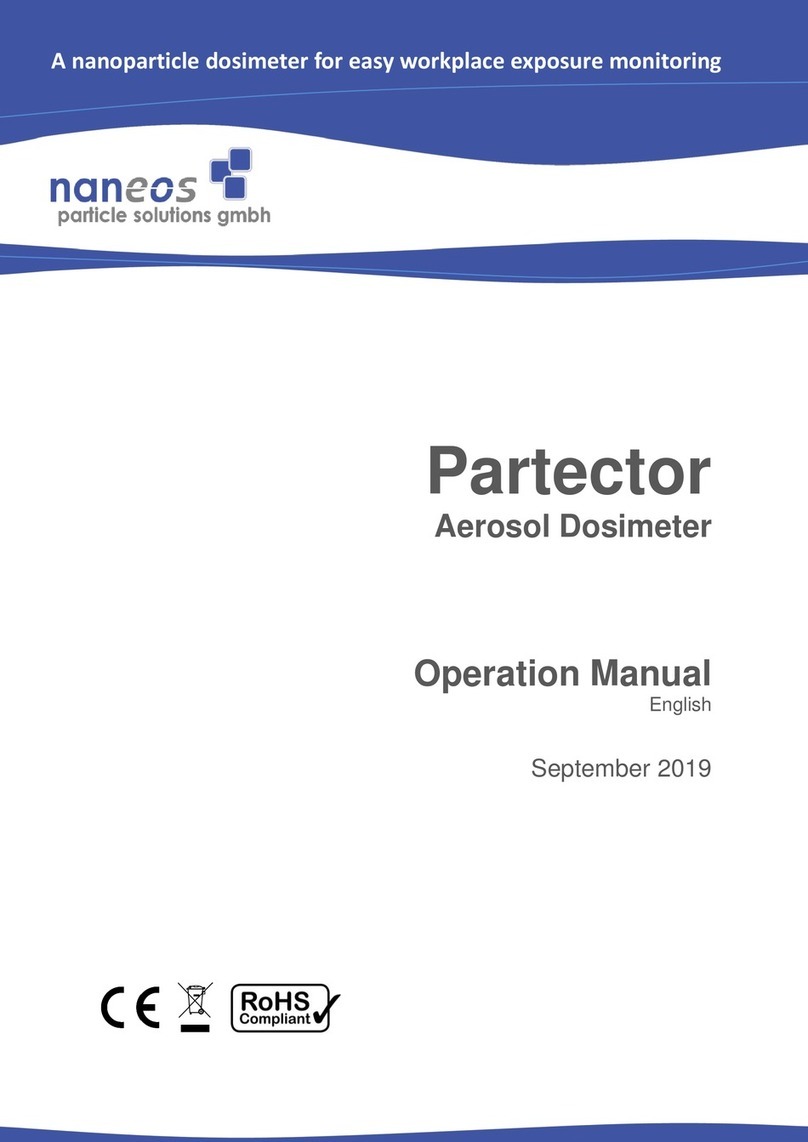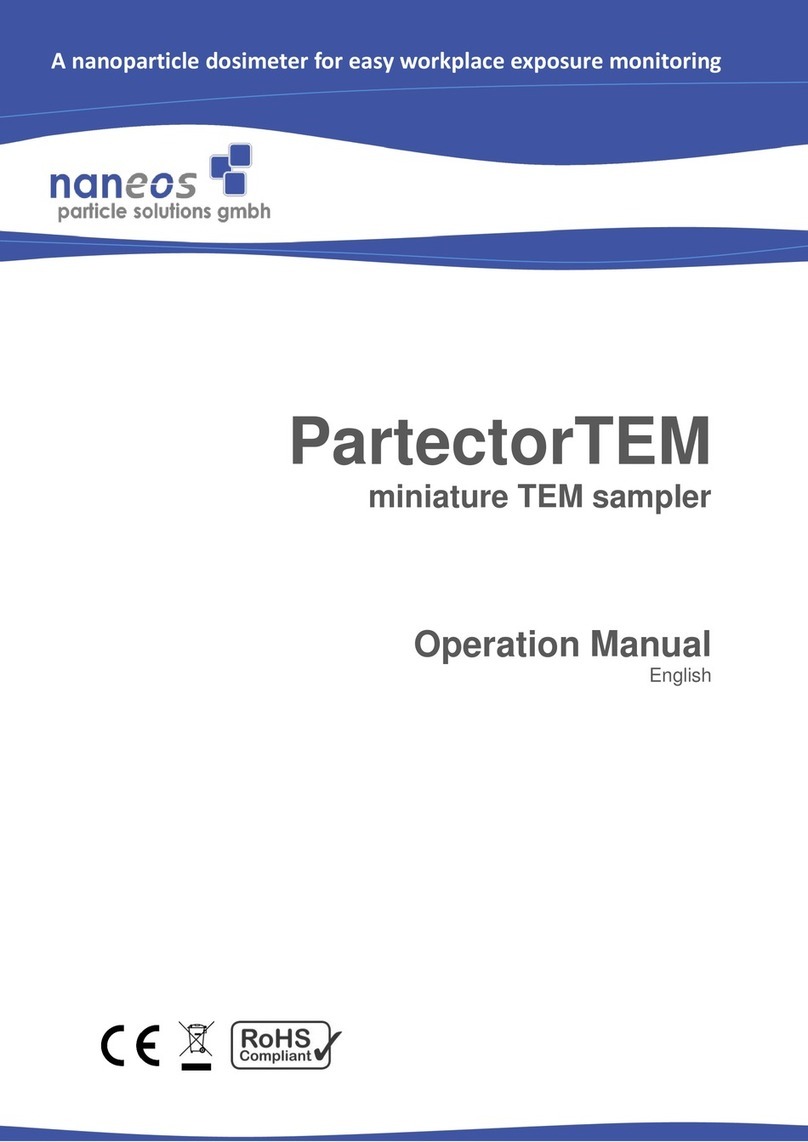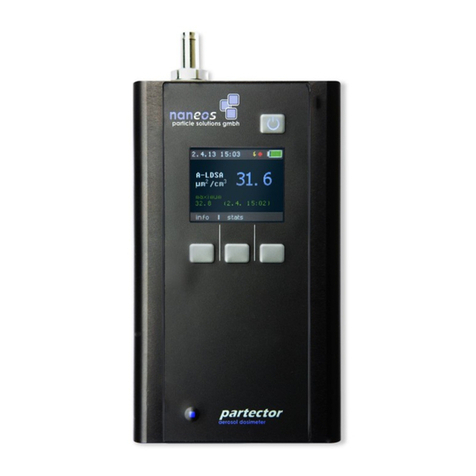www.naneos.ch
7 | 20
Aerosol inlet and outlet
The aerosol inlet is located at the top of the instrument. The internal pump
provides a regulated air flow of about 0.5 l/min. The standard aerosol inlet
has a 6-mm barb for tubing connection and contains a coarse wire mesh
to keep coarse dirt and small insects out of the instrument.
The air exits the device via the USB-port and SD-card
opening in the housing. Note that the air is not filtered
internally, so do not connect the instrument to hazardous
nanoparticle sources!
Supplying power
To chargethe Partector 2 or to operateit for periods longer than the battery
lifetime, connect the Partector 2 USB port to a PC, Laptop or to a USB-
charger or to a mobile power bank to charge the device.
While charging, the blue charge LED on the front panel lights up. When
the Partector 2 is fully charged, the LED turns off.
The Partector 2 supports fast charging (1.5A charging current). For
optimum charging, use the original USB power supply and USB cable.
Some PC’s and USB power supplies only provide 0.5A charging current,
which will prolong the charging duration.
Turning the device on and off
To switch on the device, press the power button. To turn it off, press and
hold the power button for two seconds and release it when the goodbye
message appears.
Insert / remove SD-card
To store data on the microSD-card, insert it in the Partector 2 as shown in
the graph till it snaps in.
To remove the SD-card, press on the inserted
card which will force the release. To insert the
card in your SD-card slot on a PC you need to
insert the card first in the SD/SD-card adapter or
SD/USB adapter provided.






























